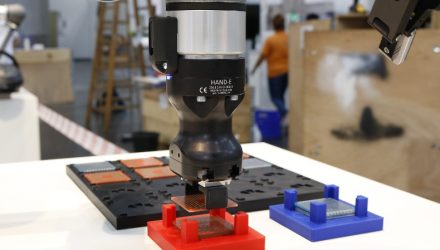By Alex Owen-Hill
What’s the benefit of a precision gripper over any other? Here are 20 reasons why a precision gripper is well worth it.
Choosing the right robotic gripper can be a tough decision. There are so many on the market, it’s hard to figure out which is best for your purposes.
And with the recent release of our Hand-E Adaptive Gripper, the range of options just got even wider. You might be wondering: Do I really need a precision gripper?
Related: 10 Common Misconceptions About Robot Grippers
Here are 20 qualities of precision grippers that make them a worthwhile investment:
1. Ability to handle small parts
Perhaps the most obvious benefit of a precision gripper is that it can accurately manipulate small parts. This is becoming more and more important for tasks like assembly, machine tending, and quality testing.
A few years ago, cobots were best suited to imprecise pick and place tasks, but now they’re precise enough to tackle almost any task.
2. Sub-mm precision
The precision of a gripper has a huge effect on whether you can use a robot for detailed tasks. Our Hand-E gripper has a sub-mm precision, whereas our other Adaptive Grippers are better suited to tasks that require only millimeter-level precision.
![]()
3. Sub-mm part detection
Part detection refers to a gripper’s ability to verify that an object is present just by grasping it. Our grippers all have this capability, but with varying degrees of precision. Hand-E can detect the size of a part down to the sub-mm level.
4. True translational motion
The fingers of our other 2-Finger Adaptive Grippers use a parallel linkage mechanism. This keeps the fingertips parallel, but it also means they follow a slightly curved motion as they close. Hand-E, on the other hand, has truly translational motion.
See our article Parallel Robot Grippers: Which is Best? for an explanation of the benefits of translational grippers.
5. Better control
One of the advantages of a translational gripper is the high degree of control it gives you. You can be sure the fingertips will follow a precise linear motion throughout the grasp, so they’re all set to handle delicate parts like small electronic boards.
6. Easier to control
True translational motion also makes the gripper easier to control for precision applications.
For example, with the 2F-85 and 2F-140 Grippers, picking a thin part from a tabletop can be tricky. You have to offset the gripper a little to counteract the effect of the curved fingertip motion.


